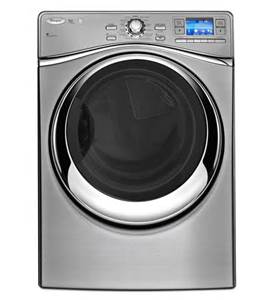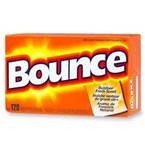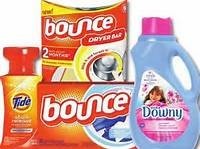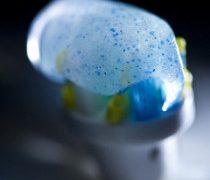Have you ever been out for a walk in your neighborhood, and gotten a whiff of someone else’s laundry? The perfume smell is no friend to the environment, and it’s certainly no friend to your body either. Fragrances are among the world’s top five allergens. That fragrant smell from dryer sheets and softeners is deceptively toxic. It also contributes to a wide range of health problems and symptoms for unknowing consumers.
Dryer sheets and fabric softeners were created for synthetic fabrics, to prevent static cling. They are designed to leave a chemical residue on fabric, most commonly “quats” (short for quaternary ammonium compounds).The fragrance is also long lasting, as intended by the manufacturer, its called fragrance substantivity. These chemicals can cause allergic reactions through skin contact and inhalation.
“83.33% of All Fabric Softeners Get a D or F Rating From The Environmental Working Group”

What’s in dryer sheets?
These fragrance chemical are not natural but derived from numerous chemicals. They are known carcinogens that cause liver damage and cancer in mammals. STUDY
Dr. Anne Steinmann tested dryer vent emissions with 25 of the most common brands of scented laundry products, here’s what she found:
- More than 600 volatile organic compounds (VOCs) were emitted, and only two of those compounds were listed on any of the associated MSDS. In addition, none of the chemicals were listed on any of the 25 product labels. Instead, these chemicals are listed under generic categories such as “biodegradable surfactants,” “softeners,” or “perfume.”
- Two of the VOCs found; acetaldehyde and benzene are considered by the EPA to be carcinogenic and unsafe at ANY exposure level.
- Seven of the VOCs are classified as “hazardous air pollutants.”
- Three of the highest concentration VOC levels were for acetaldehyde, acetone and ethanol.
- Only 25 percent of the VOCs were classified as toxic or hazardous under federal laws.
“Most of our exposure to hazardous pollutants occurs indoors, and a primary source of these pollutants is our everyday consumer products,” says Anne Steinemann at the University of Melbourne in Australia.

According to the U.S. Environmental Protection Agency (EPA) and industry-generated Material Safety Data Sheets (MSDS) , the following is a list of chemicals used in fabric softener products.
- Alpha-Terpineol–This chemical has been linked to disorders of the brain and nervous system, loss of muscle control, depression, and headaches
- Benzyl acetate–Benzyl acetate has been linked to cancer of the pancreas
- Benzyl alcohol–This upper respiratory tract irritant can cause central nervous system (CNS) disorders, headache, nausea, vomiting, dizziness and dramatic drops in blood pressure.
- Chloroform–Neurotoxic, anesthetic and carcinogenic. Really toxic to your brain. Inhaling its vapors may cause loss of consciousness, nausea, headache, vomiting, and/or dizziness, drowsiness.
- Ethanol– Another fabric softener ingredient which is on the EPA’s Hazardous Waste list and linked to CNS disorders.
- Ethyl Acetate–causes headaches and is on the EPA Hazardous Waste list
- Linalool–in studies, this chemical caused loss of muscle coordination, nervous system and brain disorders, and depression
- Pentane–causes headaches, nausea, dizziness, fatigue, drowsiness, and depression
According to the lesstoxicguide.ca site “Fabric softeners may contain quarternary ammonium compounds (quats) and imidazolidinyl, both of which are known formaldehyde releasers. For about 5% of people, quats are an extreme sensitizer. They may cause a variety of asthma-like symptoms, including respiratory arrest. Exposure to formaldehyde can cause joint pain, depression, headaches, chronic fatigue and a variety of other symptoms. In lab tests formaldehyde has caused cancer and damaged DNA.”

Common symptoms to dryer sheet exposures
Dryer sheets have numerous chemicals which can cross your blood brain barrier, in addition many fragrances are petroleum based and can be neurotoxic. Chemicals can sensitize your immune system and build up your level of toxicity, making you more reactive with each exposure.
Due to the large number of chemicals in dryer sheets it is impossible to list all of their adverse reactions, but here is a list of common reactions:
| Allergic asthma | Birth Defects |
| Brain fog | Endocrine disruption |
| Cancer | Central nervous system disorders |
| Difficulty concentrating | Dizziness |
| Eye Irritation | Headaches |
| Lethargy | Migraines |
| Nausea | Rashes |
| Reactive Airways Disease | Sinus Problems |
| Skin Itching | Vomiting |
The Association of Occupational and Environmental Clinics, is a leading international authority on asthma. They consider many of the chemicals in dryer sheets “asthmagens,” substances that can cause asthma to develop in otherwise healthy people. Since asthma affects 1 in 10 children, dryer sheets should be avoided.

Alternatives to Dryer Sheets
- Use wool balls. They are 100% natural and are effective at getting rid of static cling, wrinkles, and soften clothes.
- Use natural fiber clothes. They don’t get static cling like synthetic fabrics.
- Add ¼ C. vinegar to the wash or rinse cycle, to remove static cling.
- Dry your clothes on a clothesline or indoor drying racks.
- Remove your clothes before they’re completely dry and hang up. The slight amount of remaining moisture will prevent static cling.
How Do Your Dryer Sheets Rate?








